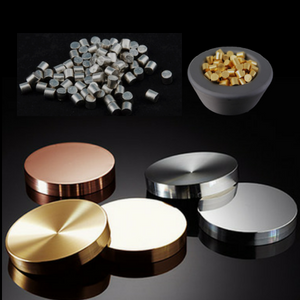Thin film materials have revolutionized multiple fields, exhibiting remarkable versatility that has piqued the interest of researchers and industry professionals alike. This article delves into several intriguing applications of thin film technology, elucidating their significance across diverse domains such as optics, electronics, energy production, and biotechnology.
1. Thin Film Photovoltaics
In the realm of renewable energy, thin film photovoltaics have emerged as a pivotal technology for solar energy conversion. These materials, typically composed of layered semiconductors such as cadmium telluride (CdTe) or amorphous silicon (a-Si), are celebrated for their lightweight and flexible nature. One profound advantage lies in their potential for integration into building materials, such as solar windows or roof tiles, thus enabling the seamless transformation of everyday structures into energy-generating assets. Moreover, they effectively harness sunlight even under low-light conditions, thereby expanding the possibilities for solar energy deployment in various environments.
2. Optical Coatings
The use of thin films in optical coatings serves to enhance the performance of lenses, mirrors, and other optical components. By applying layers of dielectric materials with precise thickness, engineers can manipulate light through processes like interference. This results in remarkable enhancements in reflectivity or transmissivity. Such coatings are ubiquitous in applications ranging from eyeglass lenses that reduce glare to telescope mirrors that improve astronomical imaging. Enhanced antireflective coatings also play a crucial role in increasing the efficiency of solar cells by minimizing light losses at interfaces.
3. Thin Film Electronics
Thin film transistors (TFTs) represent a cornerstone of modern electronics. Constructed from semiconducting materials such as hydrogenated amorphous silicon or organic semiconductors, TFTs enable the manufacture of lightweight and flexible displays. These properties are particularly advantageous for emerging applications in portable devices and flexible electronics. Furthermore, advancements in thin film technology have facilitated the development of low-cost RFID tags, enhancing inventory management and supply chain efficiency. Such innovations illustrate the transformative potential of thin films in the consumer electronics market.
4. Anti-Corrosion and Protective Coatings
The durability of materials is significantly enhanced through thin film coatings that confer anti-corrosive properties. These coatings act as barriers against moisture, oxygen, and other corrosive agents that typically degrade metal substrates. Utilization of materials such as titanium nitride or chromium carbide has been instrumental in extending the lifespan of tools and components in industrial settings. Additionally, thin films are applied on automotive finishes to protect against the elements, thus preserving aesthetics and functionality over time.
5. Thin Film Sensors
The integration of thin film materials into sensor technology has yielded unprecedented sensitivity and specificity for various chemical and biological applications. Thin film sensors utilizing materials such as zinc oxide (ZnO) or graphene have demonstrated their efficacy in detecting gases at remarkably low concentrations. In medical applications, thin films can be employed in biosensors to monitor glucose levels or detect pathogens, offering non-invasive alternatives for illness monitoring. Such innovative uses in sensors not only enhance measurement precision but also pave the way for novel health diagnostics.
6. Quantum Dots and Display Technologies
Quantum dots, nanoscale semiconductor particles, leverage the principles of quantum mechanics to produce vibrant colors in display technologies. As thin film materials, quantum dots are synthesized to create displays that exhibit higher color purity and improved energy efficiency compared to traditional LCDs. Their incorporation into television screens and mobile devices demonstrates a forward leap in visual fidelity, as these displays can be tailored to emit specific wavelengths of light for an enhanced viewing experience. The potential for further developments in this area is buoyed by the ongoing research into the manipulation of quantum dot properties.
7. Medical Applications of Thin Films
Thin film materials have found a robust application in the medical field, particularly in drug delivery systems. These films can encapsulate pharmaceuticals, enabling controlled and sustained release at targeted sites within the body. The design of such systems can optimize therapeutic efficacy while minimizing side effects. Furthermore, thin films are integral to the development of passive implants and biosensors that contribute to real-time health monitoring, showcasing the expansive potential of this technology in personalized medicine.
8. Environmental Uses of Thin Films
The application of thin film materials in environmental remediation has garnered significant attention. They can be utilized in filtration systems that remove pollutants from water or air, functioning as a selective barrier against contaminants. For instance, thin film membranes can effectively segregate salts from seawater, aiding in desalination processes. This sustainable approach harnesses thin film technology to address pressing global challenges related to clean water access and environmental pollution.
In conclusion, thin film materials represent an expansive frontier with multifaceted applications across diverse domains. From enhancing the efficiency of renewable energy solutions to enabling innovations in medical technology, their significance is poised to expand further as research continues to unveil novel capabilities. As exploration into the synthesis and characterization of these materials advances, the potential for transformative applications becomes increasingly pronounced, promising a future where thin films will play an integral role in addressing societal challenges and fostering technological growth.












